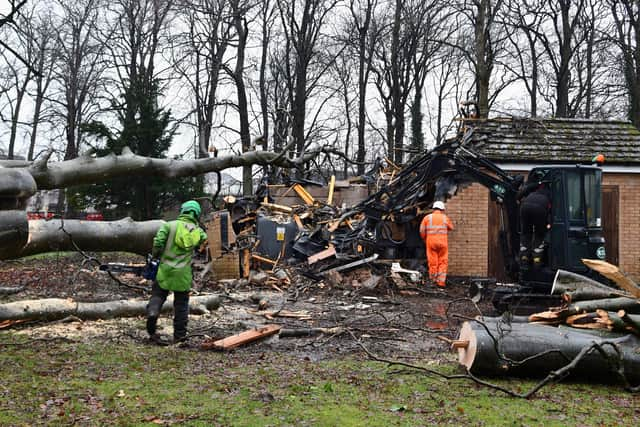Kirsty McLuckie: how to protect property during a storm
I certainly rued my decision to install a Velux window in the sloping roof above my bed as Storms Isha and Jocelyn rolled past. But a sleepless night or two was mild compared to a near neighbour who lost a downstairs window when an ancient ash tree crashed down through it.
Perhaps the strangest weather-related incident came after a couple of weeks of the mercury failing to rise to zero. Late one night, something frightful came a-knocking on our French windows. Opening the curtains we were confronted with a huge ram, tapping his impressive horns on the glass. We shooed him away, but the poor tup was probably just hungry because the ground had been frozen for so long.
Advertisement
Hide AdAdvertisement
Hide AdNone of these weather events are really unprecedented at this time of year, but to have them all come one after the other leaves homeowners with little time to prepare for the next.


But, if the wind and rain should let up for an hour or two, there are some precautionary measures that households can take.
James Berry, deputy chief executive of the Property Care Association, has advice for which areas of your building’s fabric to check – should it be safe to climb a ladder.
Firstly, have a gander at the roof as dislodged tiles or slates makes an easy in-route in for water which can cause timber decay and wet rot long term. It can be particularly damaging if there is no secondary underfelt.
While you are up there, look at grids and gutters. It’s important that water drains away from a building quickly, so check and clear away any build-up of leaves. Gutters and downpipes should also be secure, as wind can also cause further damage if they have been loosened.
If wall ties have corroded but the issue has remained undetected, a strong wind could easily cause an affected wall to collapse.
Chimney flashings, if not properly sealed, can allow water in – as can gaps in damaged, loose or eroded pointing and rendering in driving rain. Particular attention should be paid to the weather-prevailing side of a property.
And look to the garden as well the building. Securing loose objects minimizes potential hazards during adverse weather, reducing the risk of damage to your property.
Advertisement
Hide AdAdvertisement
Hide AdWind speeds greater than around 65mph have the ability to knock over an average adult so items like chairs, tables and garden toys can easily be taken by the wind and risk damaging other items of your, or your neighbour’s, property.
Toolstation has a list of advice to prepare for a power cut, including stocking up on spare batteries, and charging portable torches.
During an outage, shut all your doors to retain as much heat as possible, and try not to open fridges and freezers to keep them cool.
And the retailer advises keeping one light on, so you know when the power is restored, but to turn off all others – should there be a power surge, you will only have lost one bulb.
It is always a good rule of thumb to check your fuse box too. There is no point in sitting in the dark if it is just a localised tripped switch.
- Kirsty McLuckie is property editor at The Scotsman